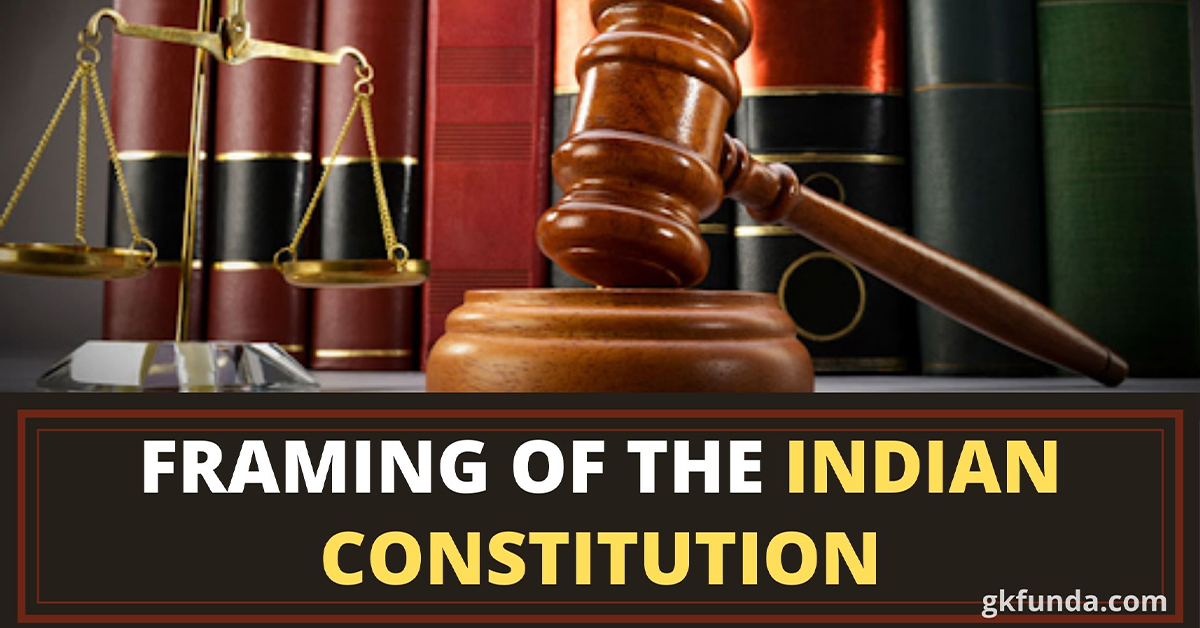Table of Contents
The Constitution was framed by the Constituent Assembly of India, set up on 16th May 1946, in accordance with the Cabinet Mission Plan, under the Chairmanship of Sach-chidanand Sinha, initially Dr. Rajendra Prasad and HC Mukherjee were elected as the president and Vice-president respectively on 11th December 1946.BN Rau was appointed as the Constitutional Advisor.
The idea to have a constitution was first given by M N ROY-A Pioneer of the communist movement in India. The total membership of the constituent Assembly was 389, of these 292 were representatives of British states,93 were representatives of Princely States and 4 were from the chief commissioner’s Provinces of Delhi, Ajmer-Merwara, Coorg, and British Baluchistan. The Chairman of the drafting committee was Dr. B R AMBEDKAR, also known as the Father of the Indian Constitution.
Indian Constitution Preamble:
WE, THE PEOPLE OF INDIA, having solemnly resolved to constitute India into a SOVEREIGN SOCIALIST SECULAR DEMOCRATIC REPUBLIC[1] and to secure to all its citizens:
JUSTICE, social, economic, and political;
LIBERTY of thought, expression, belief, faith, and worship;
EQUALITY of status and of opportunity;
and to promote among them all FRATERNITY assuring the dignity of the individual and the [unity and integrity of the Nation;
IN OUR CONSTITUENT ASSEMBLY this twenty-sixth day of November 1949, do HEREBY ADOPT, ENACT AND GIVE TO OURSELVES THIS CONSTITUTION.
What Is a Preamble?
- The Preamble is the preface or introduction of the constitution. It is an integral part of the constitution. The interpretation of the constitution is based on the spirit of the preamble.
- The Objective Resolution drafted and moved by Pandit Jawaharlal Nehru and adopted by the constituent Assembly ultimately became the Preamble.
- The words. Socialist, Secular, and Integrity were added by the 42nd Constitutional Amendment Act in 1976.
Enactment of the Constitution:
- The Constituent Assembly took 2 years,11 months, and 18 days to complete the Constitution.
- The constitution came into force on 26th January 1950, known as Republic Day of India. The Constituent Assembly adopted our National Flag on 22nd July 1947. It was designed by PINGALL VENKAYYA.
- The enforcement of the Constitution was delayed till 26th January because, in 1929 on this day Indian National Congress demanded POORNA SWARAJ in the Lahore session, Chaired by JL Nehru.
- The Constitution is adopted on 26tH November 1949 and contained a preamble,395 Articles divided into 22 parts, and 8 schedules. Presently, it has 448 Articles divided into 25 parts and 12 schedules.
Sources of The Indian Constitution
| Which part of the constitution was taken | From which country’s constitution |
|---|---|
| Joint sitting of parliament Concurrent list | Australia |
| Suspension of fundamental rights during emergency | Germany |
| •Supreme Court •Preamble •Fundamental rights •Written constitution •Independence of the judiciary and judicial review •Vice-President as the Ex-officio Chairman of the upper House | USA |
| The procedure established by law | Japan |
| Republic and the ideals of liberty equality and fraternity of the preamble | France |
| Fundamental duties | Erstwhile USSR |
| • Rule of law • CAG Office • Bicameral Parliament • Single citizenship • Law-making procedure • Cabinet system • Prerogative Writs | UK |
| Procedure for amendment of the constitution and election of a member of Rajya Sabha | South Africa |
| Distribution of powers between the Centre and the States and placing Residuary Powers with the Centre | Canada |

